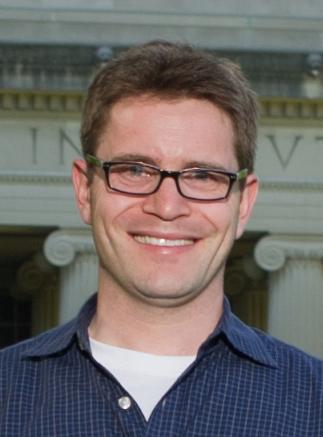Some New Continuum-Based Approaches for Particle Flow Modeling
Events | Mechanical Engineering
Some New Continuum-Based Approaches for Particle Flow Modeling
October 28, 2019 8:30 AM

Speaker
Ken Kamrin
Location
ESB 1001
Type
Seminar
Abstract: This talk discusses developments in continuum modeling and hybridized discrete- continuum modeling for fluid-saturated and dry particle flows. First, we discuss a methodology for simulating "simple" continuum models for dry grains, focusing on a recent frictional plasticity model and a meshfree simulation approach using the Material Point Method (MPM). This approach on its own is shown sufficient to describe a number of granular intrusion problems.
However, due to its simplicity such a model cannot always be trusted to capture general flows accurately, and struggles to represent particle-scale phenomena such as clogging, shear-banding, ballistic motion, and particle-wall tribology. To address this we propose a discrete-continuum hybrid approach, where an "oracle" algorithm adaptively decides how to partition the domain into continuum regions and discrete element regions. The idea is to use continuum modeling (MPM simulation) in sub-regions where it can be trusted, and the discrete element method (DEM) in sub- regions where additional clarity is needed. The domains overlap along transition zones, where a Lagrangian dynamics mass-splitting coupling principle enforces agreement between the two simulation states. Enrichment and homogenization operations are developed that allow the partitions to evolve over time. This approach accurately and efficiently simulates complex scenarios that previously required an entirely discrete treatment.
Finally, we discuss a technique for submerged granular flow problems, which treats the granular phase and the fluid phase as two separate, yet coupled continuum models. Using mixture theory, the forces of bouyancy and drag couple the Navier-Stokes behavior of the fluid phase to a dilatant, rate-sensitive granular flow continuum model. The final mixture formulation is simulated using two coupled MPM simulations, one for the fluid phase and one for the granular phase, which solves for all continuum variables in all phases. This methodology is shown able to replicate experimental results for saturated granular flows over a range of conditions and dilutions, and can be extended to account for more obscure effects, including the dramatic shear-thickening seen in fine-particle suspensions such as cornstarch-and-water mixtures.
Bio: Ken Kamrin received a BS in Engineering Physics and a minor in Mathematics at UC Berkeley in 2003, and a PhD in Applied Mathematics at MIT in 2008. Kamrin was an NSF Postdoctoral Research Fellow at Harvard University in the School of Engineering and Applied Sciences before joining the Mechanical Engineering faculty at MIT in 2011, where he was appointed the Class of 1956 Career Development Chair. Kamrin's research focuses on constitutive modeling and computational mechanics for large deformation processes, with interests spanning elastic and plastic solid modeling, viscous and non-Newtonian flows, amorphous solid mechanics, upscaling and continuum homogenization, and analytical methods for fluids and solids. Kamrin has been awarded fellowships from the Hertz foundation, US Defense department, and National Science Foundation. Kamrin received the 2010 Nicholas Metropolis Award from APS for work in computational physics, the NSF CAREER Award in 2012, the 2015 Eshelby Mechanics Award for Young Faculty, the Ruth and Joel Spira Teaching Award from the MIT School of Engineering in 2016, and the 2016 ASME Journal of Applied Mechanics Award. He currently sits on the Board of Directors of the Society of Engineering Science.